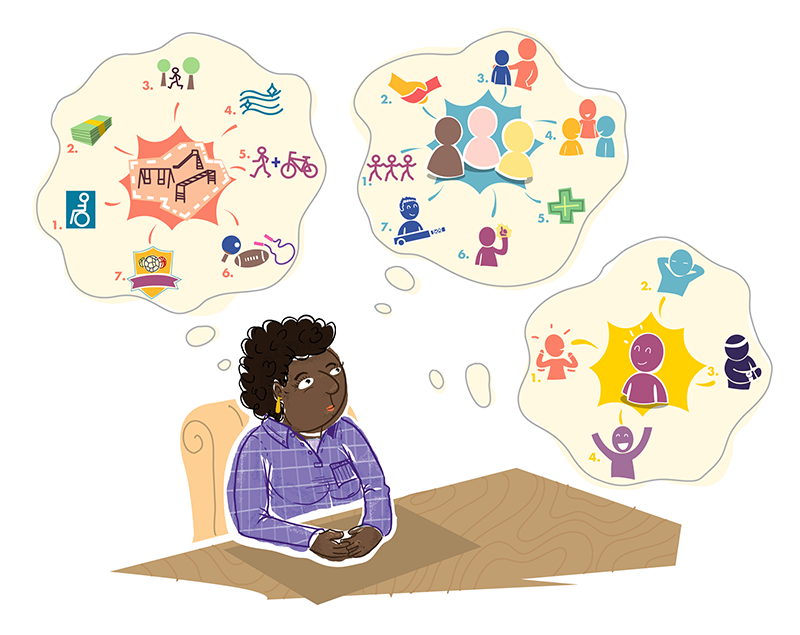Checklist to make an activity appealing
Living Democracy » Principals » ACTIVE SCHOOL » Preparation » Checklist to make an activity appealing“Young and Physically active!
A blueprint for making physical activity appealing to youth (WHO, 2012)
Physical activity plays a vital role in the health and well-being of children and young people. It contributes to their short and long-term physical, social, emotional and psychological development; it promotes independence and healthy growth, and it helps to develop fundamental movement skills. A recent study of young people’s health points to increasing evidence of a correlation between physical activity and enhanced academic and cognitive performance.
Despite the well-known benefits of an active lifestyle, epidemiological studies have identified an increasing prevalence of inactivity among children and adolescents. The latest report from WHO on the Health Behavior in School-aged Children study, with 11-, 13- and 15-year-old pupils in 35 countries of the WHO European Region, as well as North America, demonstrated that more than two thirds of young people do not meet the current recommendation for physical activity of 60 minutes per day, 5 or more days a week. Physical activity levels fall significantly between the ages of 11 and 15 years.
Environmental, economic and social factors, as well as perceptions about safety, accessibility and weather conditions, are thought to affect the opportunities for children and adolescents to be physically active. Likewise, the influence of peers can encourage or discourage physical activity. Across Europe there are many approaches and interventions aimed at increasing young people’s physical activity through supportive environments.
A common challenge identified by promoters of physical activity across Europe is how to involve young people in the activity or intervention offered. The problem is described as a lack of understanding of young people and what they want and the need for guidance on how to make physical activity more youth-friendly. As a result, a project was commissioned to create a blueprint for appealing and enjoyable physical activity. To render the guidance more relevant, it was decided that the perspectives and input of young people, as voiced by youth delegates from the CEHAPE Network, (Children’s Environment and Health Action Plan for Europe Network) should direct the project.
A Physical environment
The facilities, equipment and environment associated with engaging in physical activities
- Location: ease of access
- Cost
- Outdoor activities
- Avoiding air pollution
- Walking and cycling
- Equipment and facilities
- Sports clubs
B Social environment
The people, culture and attitudes associated with taking part in physical activities.
The activity culture: Aspects such as cooperation, integration, positive attitudes, team spirit and communication were all specified as contributing to the enjoyment of physical activities and lead-ing to a positive experience.
- Healthy competition
- Mentors
- Socializing
- Health awareness
- Choice
- National activities and famous personalities
C Personal experience and participation
The personal preconditions for taking part in physical activities.
- Independence and self-confidence
- Relaxation
- Avoidance of too much activity and the possibility of injuries
- Fun – endorphins, adrenaline, enjoyment


